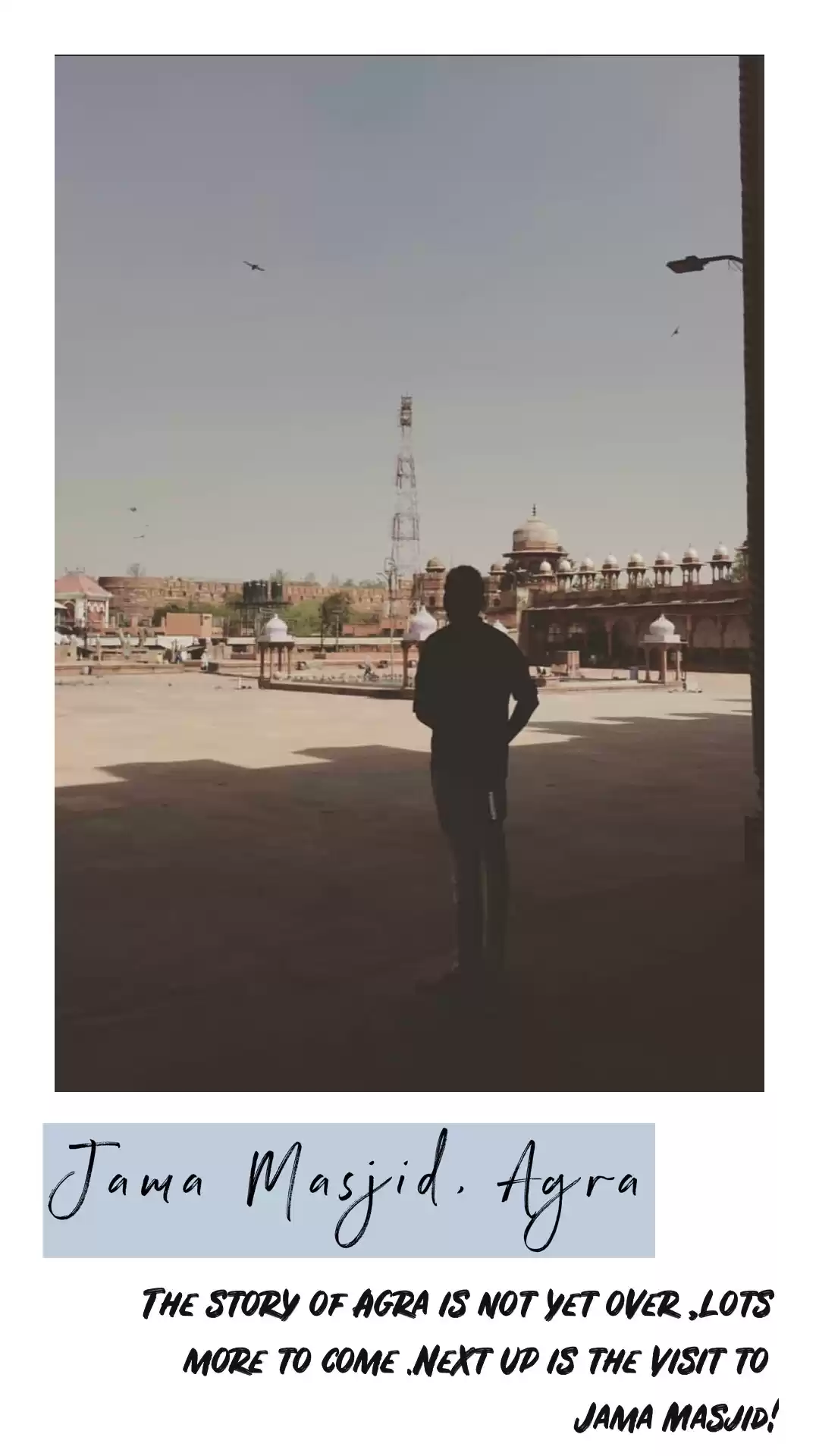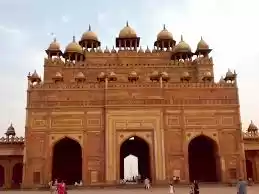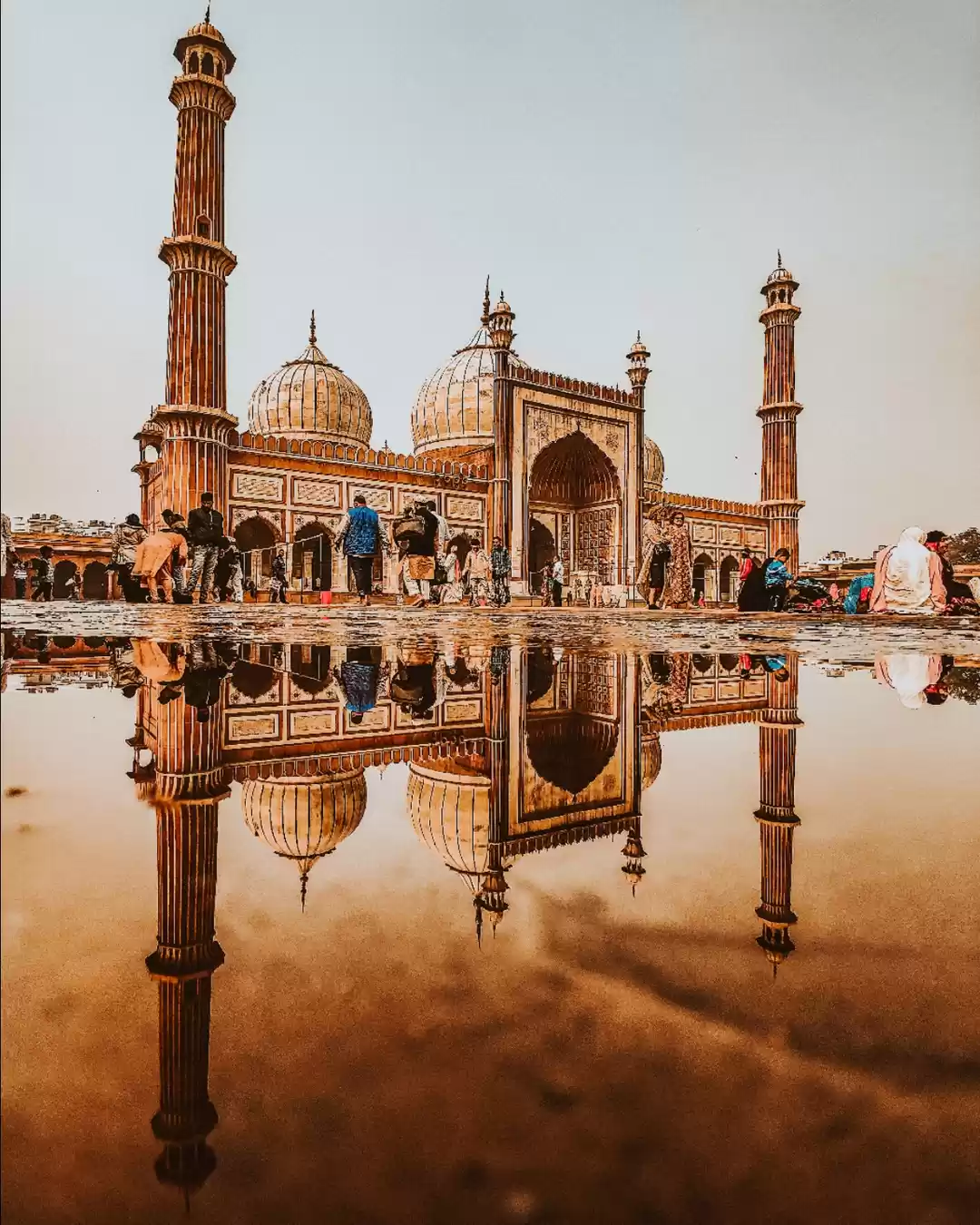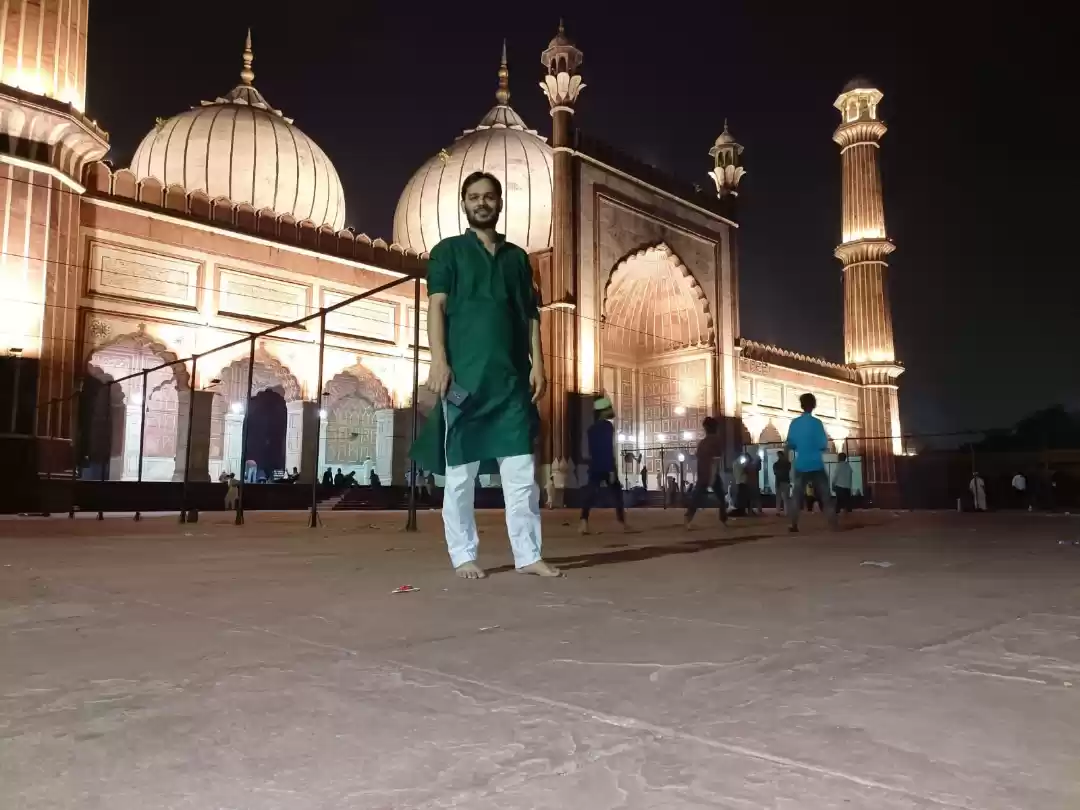Built in 1648, Jama Masjid in Agra is one of the largest and oldest mosques in Agra, with a rich history that dates back to the Mughal era. Also known as Jami Masjid or Friday Mosque showcases exquisite Mughal architecture, blending Persian and Islamic styles.
The courtyard of the mosque is one of the largest in India and can accommodate up to 25,000 worshippers at a time. The mosque is particularly crowded during festivals such as Eid-ul-Fitr and Eid-ul-Adha, when thousands of Muslims gather to offer prayers and celebrate.
History Of Jama Masjid Agra

- Jama Masjid Agra dates back to the 17th century, commissioned by Jahanara Begum, daughter of Mughal Emperor Shah Jahan, builder of the Taj Mahal.
- Jahanara Begum, a powerful and devout Muslim princess, dedicated the mosque to Sheikh Salim Chishti, a revered Sufi saint whose tomb is also in the mosque compound.
- Started in 1643, completed in 1648, with over 5,000 laborers and artisans contributing to its construction.
- Part of the Agra Fort complex, connected to it by a spacious octagonal Tripolia Chowk, later destroyed by the British.
- Site of Aurangzeb's coronation, who later made modifications including a new entrance gate and a marble screen.
- Jama Masjid survived British invasion and the Indian Rebellion of 1857, now a protected monument under the Archaeological Survey of India.
Architecture of Jama Masjid Agra

Structure: Rectangular plan, high platform, five arched entrances to the courtyard, main entrance facing Agra Fort with a large Persian inscription praising Shah Jahan and Jahan Ara.
Features: Central dome with lotus motifs and a golden finial, four smaller domes, two tall minarets (40 meters high) with three storeys, spacious courtyard which can accommodate up to 10,000 worshippers with a central fountain supported by four kiosks.
Decoration: Intricate carvings, inscriptions, colorful tiles, floral motifs, geometric patterns, calligraphic verses from the Quran, inlaid panels reflecting light similar to Taj Mahal.
Prayer Hall: Three mihrabs indicating the direction of Mecca, central mihrab made of white marble with a niche for a lamp, marble pulpit for sermons.
Entrance: The main entrance faces the Agra Fort and boasts a large Persian inscription praising Shah Jahan and Jahan Ara.
Interior: Scriptures in the Persian style praising Shah Jahan and Jahan Ara, along with inlaid panels similar to those in the Taj Mahal, create a mesmerizing effect with reflected light.
Tomb of Salim Chishti: Located within the mosque compound, made of white marble with a carved lattice screen, dome, and chhatri, believed to have miraculous powers.
Visit Chandni Chowk and explore Delhi like a pro
Timings & Entry Fee Of Jama Masjid

The best time of day to visit Jama Masjid in Agra to avoid crowds is early in the morning, shortly after the mosque opens. This is typically before 8:00 AM. Visiting during weekdays may also help avoid larger crowds compared to weekends or holidays.
Timings:
Monday to Thursday and Saturday to Sunday: 7:00 am – 12:00 pm, 1:30 pm – 6:30 pm
Friday: Closed for tourists
Entry Fee:
No entry fee is required for visiting Jama Masjid
Photography may incur a charge
Places To Visit Near Jama Masjid

Taj Mahal (2.5 kilometers): One of the most famous monuments in the world, the Taj Mahal is a stunning white marble mausoleum built by Emperor Shah Jahan in memory of his wife Mumtaz Mahal. It is a UNESCO World Heritage Site and a must-visit attraction in Agra.
Agra Fort (1.6 kilometers): Also known as the Red Fort of Agra, this historical fort was the main residence of the emperors of the Mughal Dynasty until 1638. It is a UNESCO World Heritage Site and offers a glimpse into the rich history of the Mughal era.
Fatehpur Sikri (37 kilometers): Located around 37 kilometers from Agra, Fatehpur Sikri is a well-preserved city that served as the capital of the Mughal Empire from 1571 to 1585.
Tomb of Itimad-ud-Daulah (6 kilometers): Also known as the Baby Taj, this beautiful tomb is often regarded as a draft of the Taj Mahal. It is a fine example of Mughal architecture and is located along the Yamuna River.
Mehtab Bagh (2.7 kilometers): A beautiful garden complex located opposite the Taj Mahal, Mehtab Bagh offers stunning views of the Taj Mahal from across the river. It is a popular spot for photographers and tourists looking to capture the beauty of the Taj Mahal from a different perspective.
Planning for a Delhi Vacation? Plan right away!
Dress Code Jama Masjid

Visitors are expected to dress modestly. It is advisable to cover your head, shoulders, and legs. Shorts, skirts, sleeveless tops, or any revealing clothes should be avoided.
Guided Tours To Jama Masjid
Guided tours are available that include Jama Masjid along with other historical landmarks in Agra. These tours can provide a rich historical context and enhance your visit.
How To Reach Jama Masjid

By Metro: Nearest Metro Station: Jama Masjid Metro Station (Violet Line).
From the metro station, it is a short walk to the mosque.
By Bus: Several buses ply to Jama Masjid from different parts of Delhi.
Bus stops near the mosque include Jama Masjid, Chawri Bazar, and Red Fort.
By Car/Taxi: Jama Masjid is located in Old Delhi, near Chandni Chowk.
Visitors can hire a taxi or use a ride-sharing service to reach the mosque.
Must Read: Stay in the best hotels of Delhi for a perfect weekend
Tips and Best Time to Visit Jama Masjid Agra

- Visit early morning or late afternoon for pleasant weather and fewer crowds.
- Avoid summer (April to June) when temperatures can reach 45°C (113°F) and monsoon (July to September) due to heavy rainfall and flooded roads.
- Hire a guide or audio guide for insights into the mosque's history and architecture.

























